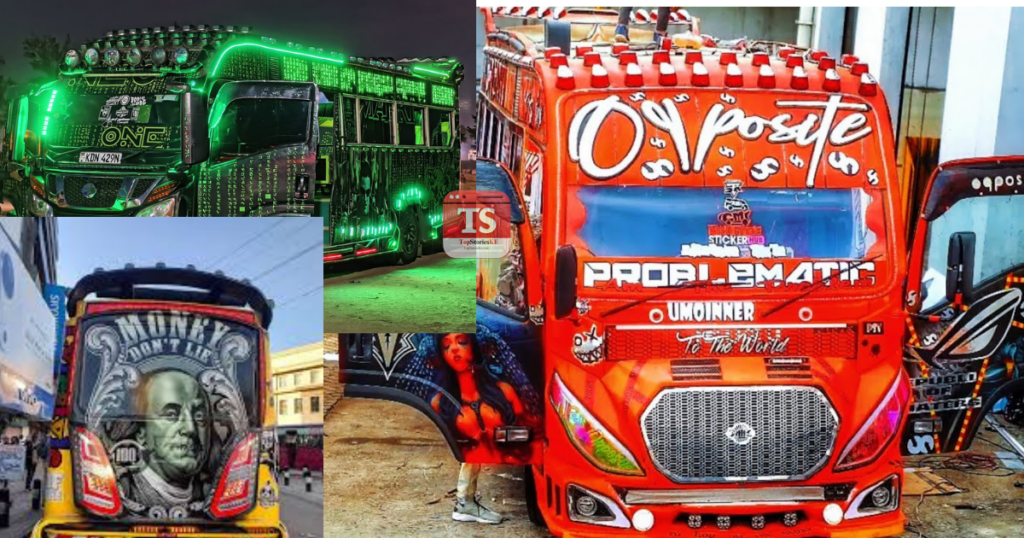Matatu culture in Nairobi is more than just transportation, it’s a way of life. These colorful, music blasting minibuses are a important part of Kenya’s identity. Despite their cultural significance, matatus face challenges that affect passengers and transport sector.
History of Matatu Culture in Nairobi
Matatus emerged as an informal transport system in the 1970s. Initially, they were unregulated, with private owners operating small vans to serve commuters. Over time, they evolved into a major public transport mode, which carrying millions of Nairobi residents per day. Their unique graffiti designs, vibrant colors and high energy music have become a symbol of urban life in Kenya.
The Good: A unique identity and economic driver
Matatu culture in Nairobi has converted public transport into an art form. Their vibrant graffiti, neon lights and loud music create a unique experience for commuters. Many vehicles have famous celebrities, politicians, or murals of urban arts, making them moving billboards of creativity.
In addition to aesthetics, matatus provides employment to thousands of drivers, conductors, artists and mechanics. The industry supports many young entrepreneurs, making it an important economic driver. The flexible nature of the matatus routes ensures that they reach areas that do not do other transport services, filling a significant mobility critical in the city.
Bad: Safety and Regulation issues
Despite their appeal, matatus are associated with careless driving, overloading and persistent accidents. Pressure to meet daily financial goals leads to unsafe driving practices. Passengers often complain about uncertain fare hike, especially during rush hours and bad weather.
Corruption is another challenge in the industry. Some operators bribe traffic authorities to evade fines, making it difficult to implement road safety rules. Inconsistent government rules have also created an unstable environment for both matatu owners and commuters.
Commuter Experience: A Daily Struggle
Many Nairobi residents rely on matatus for daily travel, but experience is not always smooth. Passengers face long queues, unexpected fare and congested roads. Some enjoy entertainment and convenience, while others struggle with the delay caused by traffic jams and occasional police crackdowns.
The Future: A change towards modern transport
Technology is slowly improving the Matatu culture in Nairobi. Cashless payments are being introduced to streamline the fair collection and reduce theft. Apps such as SWVL and digital ride-hailing services are offering alternatives to traditional matatus pushing for better service delivery.
Environmentally friendly initiative is also gaining momentum. Companies like BasiGo are starting introducing electric buses to reduce pollution. If widely adopted, these vehicles can make public transport more durable.
The Kenyan government is working on strict rules to increase security and organization. These improvements will help integrate matatus with other transport mode for a smooth commuting experience.
Government intervention and potential reforms
Over the years, the government has made several attempts to regulate the Matatu industry. Major measures include:
- The introduction of Michuki Rules in 2003, which made seat belts and speed governors mandatory.
- Push for cashless fare system to reduce corruption and improve revenue tracking.
- The expansion of the Bus Rapid Transit (BRT) system, which aims to reduce congestion in the roads of Nairobi.
If fully implemented, these measures can bring revolution in public transport in Nairobi, making a safe and more efficient system for passengers.
How Matatu Culture compares other cities
The public transport system varies throughout Africa. While Nairobi depends a lot on the matatus, cities such as Addis Ababa and Johannesburg have embraced modern bus rapid transit (BRT) and train systems. For example, Dar es Salaam successfully implemented a BRT system, which reduced the congestion and improves urban mobility. Nairobi can learn from these cities by integrating formal and informal transport modes.
The iconic sources confirm the ongoing changes
Conclusion
Matatu culture in Nairobi is a powerful symbol of urban life. While it has its own challenges, ongoing reforms and innovations provide hope for a safe and more efficient public transport system. The industry should be suited to modernization efforts while maintaining its unique cultural appeal.
With better policies, investment in safe vehicles, and continuous enforcement of transport laws, Nairobi’s Matatu culture can become a model for urban dynamics in Africa. Kenya has a role to play the role of passengers, operators and regulators in shaping the future of public transport.
Take membership of our blog and be updated with the latest transport trends! TopStoriesKe.



